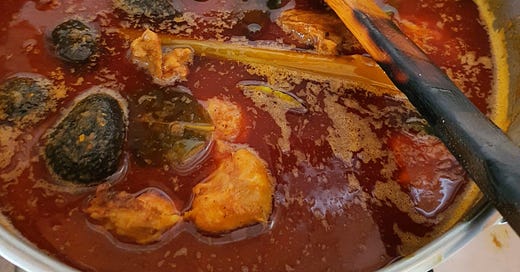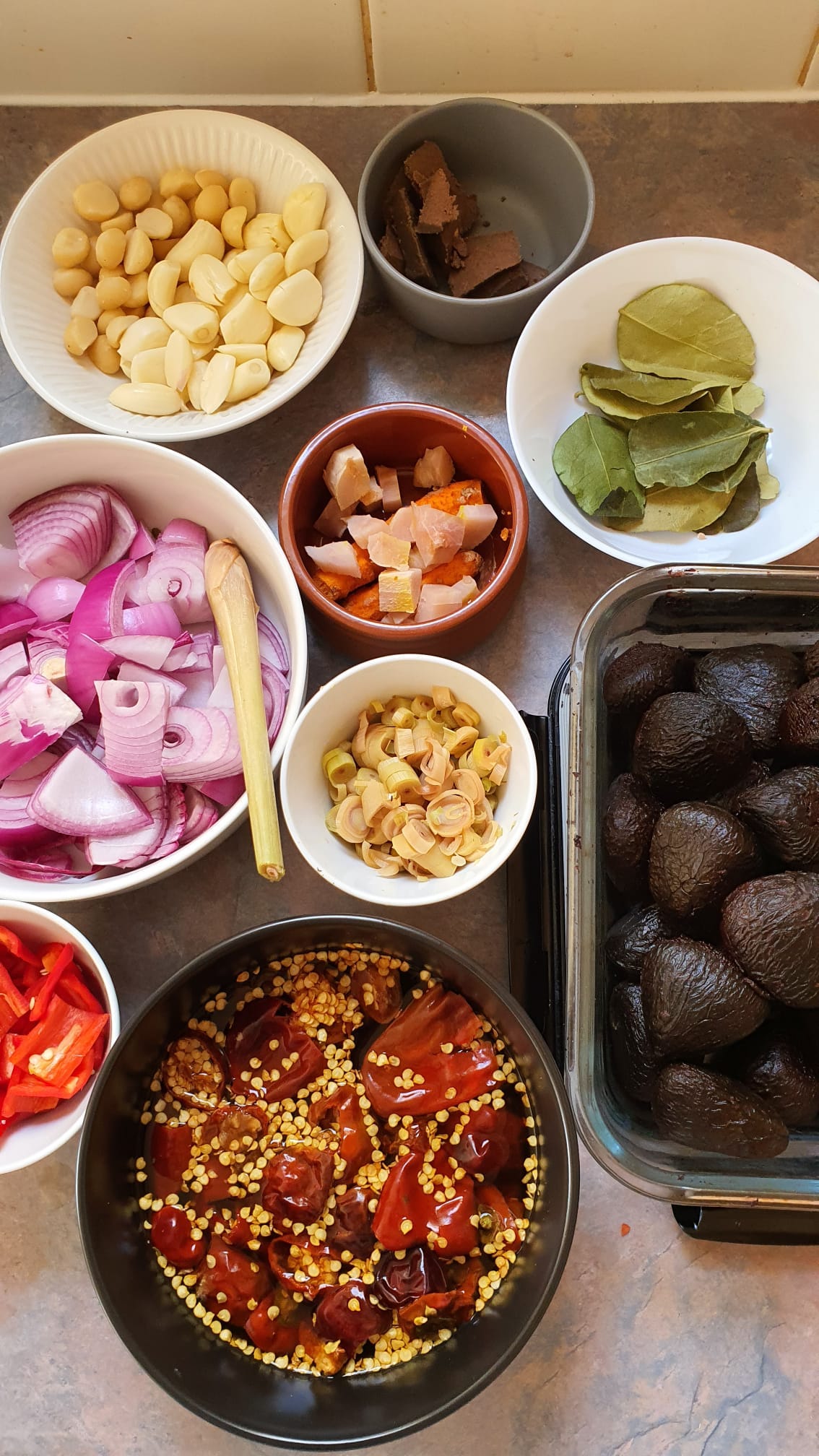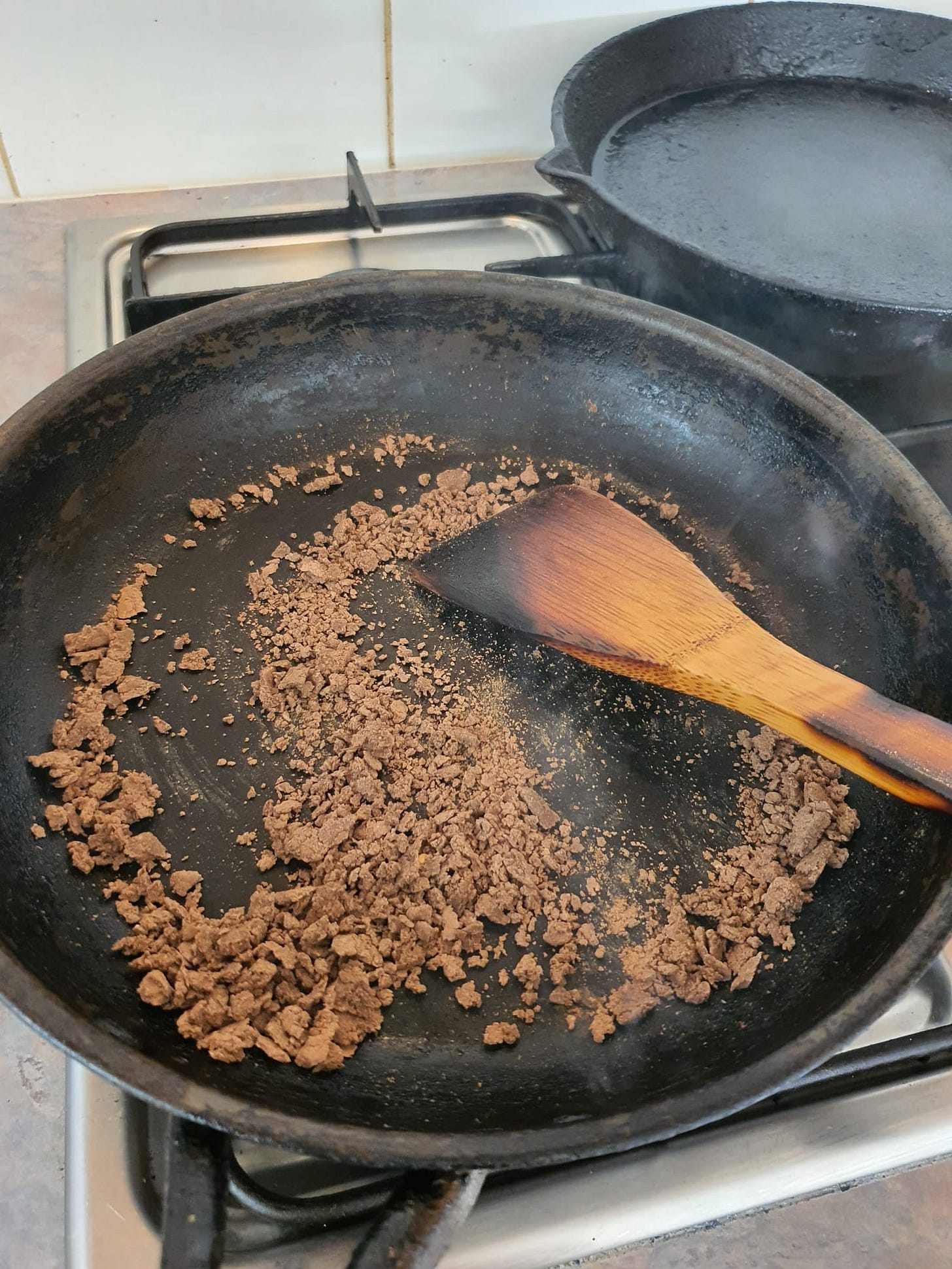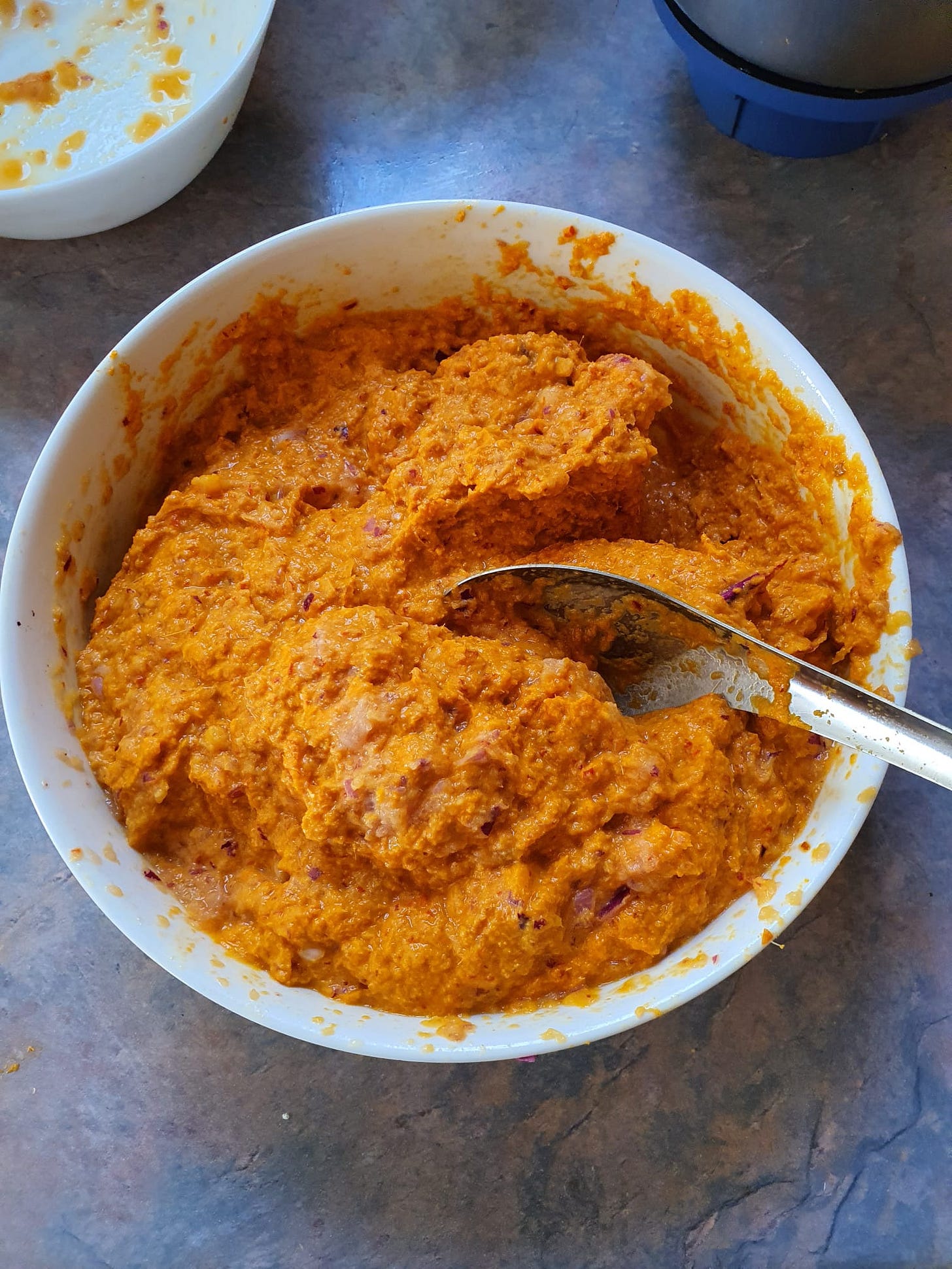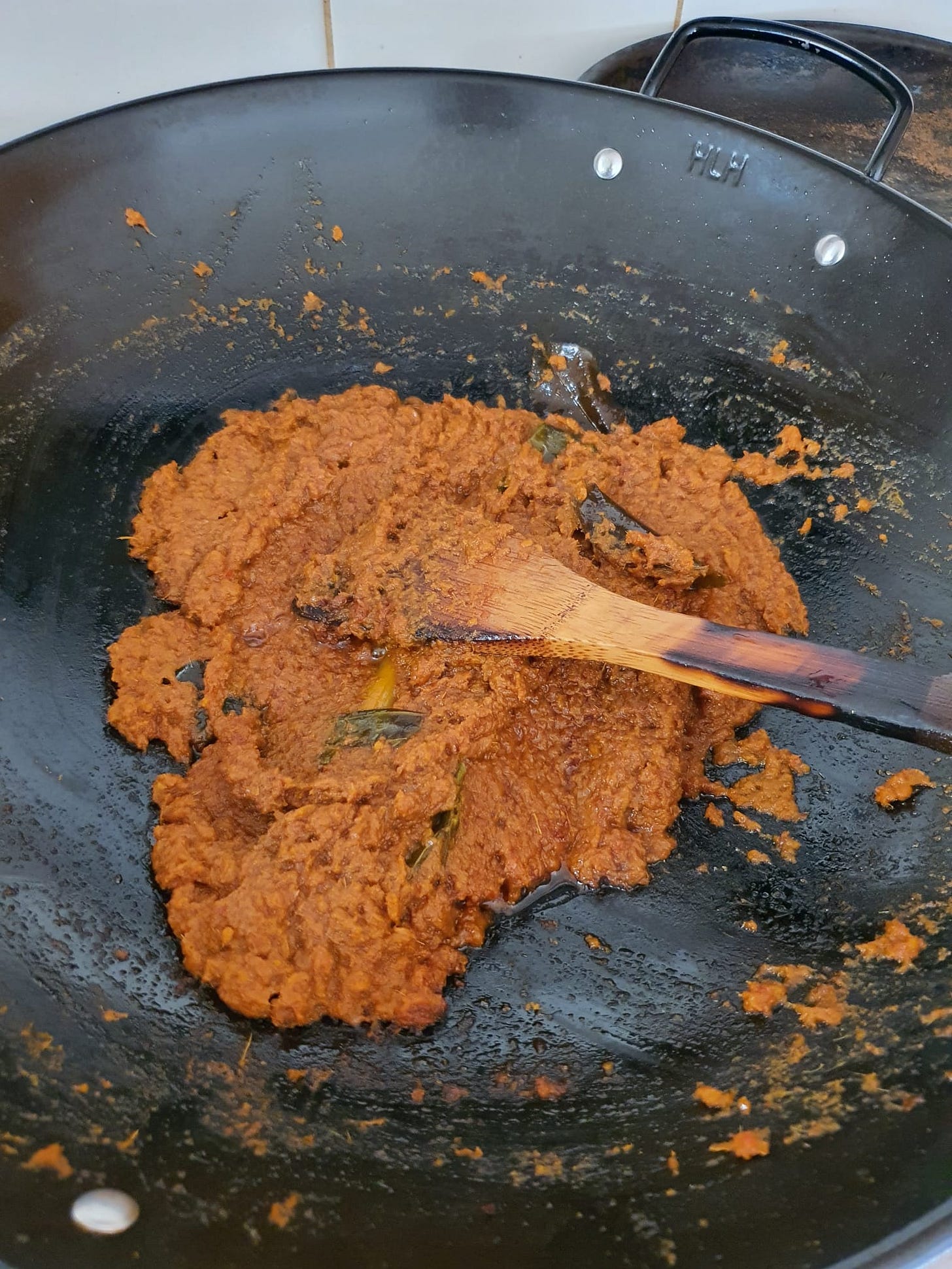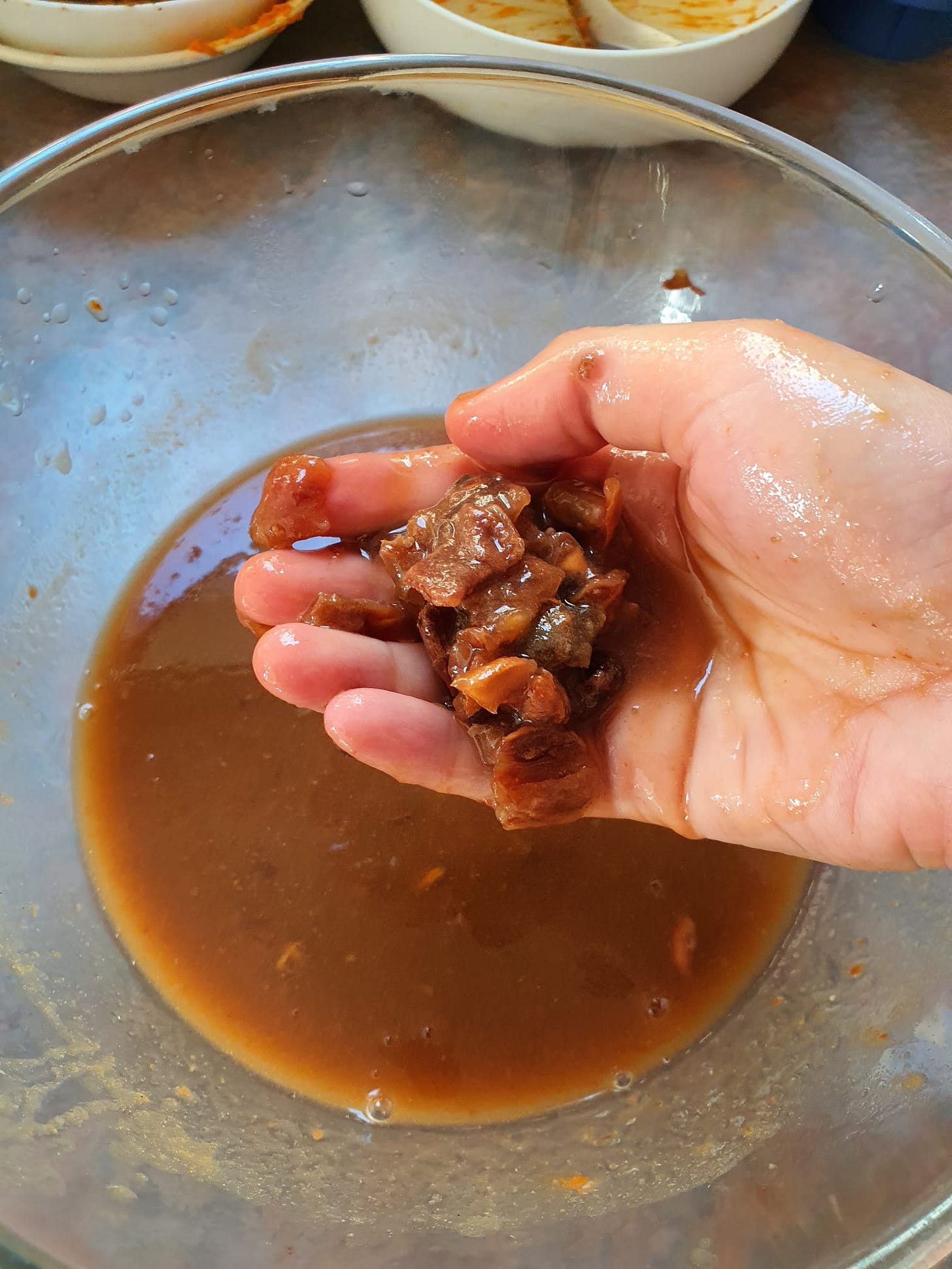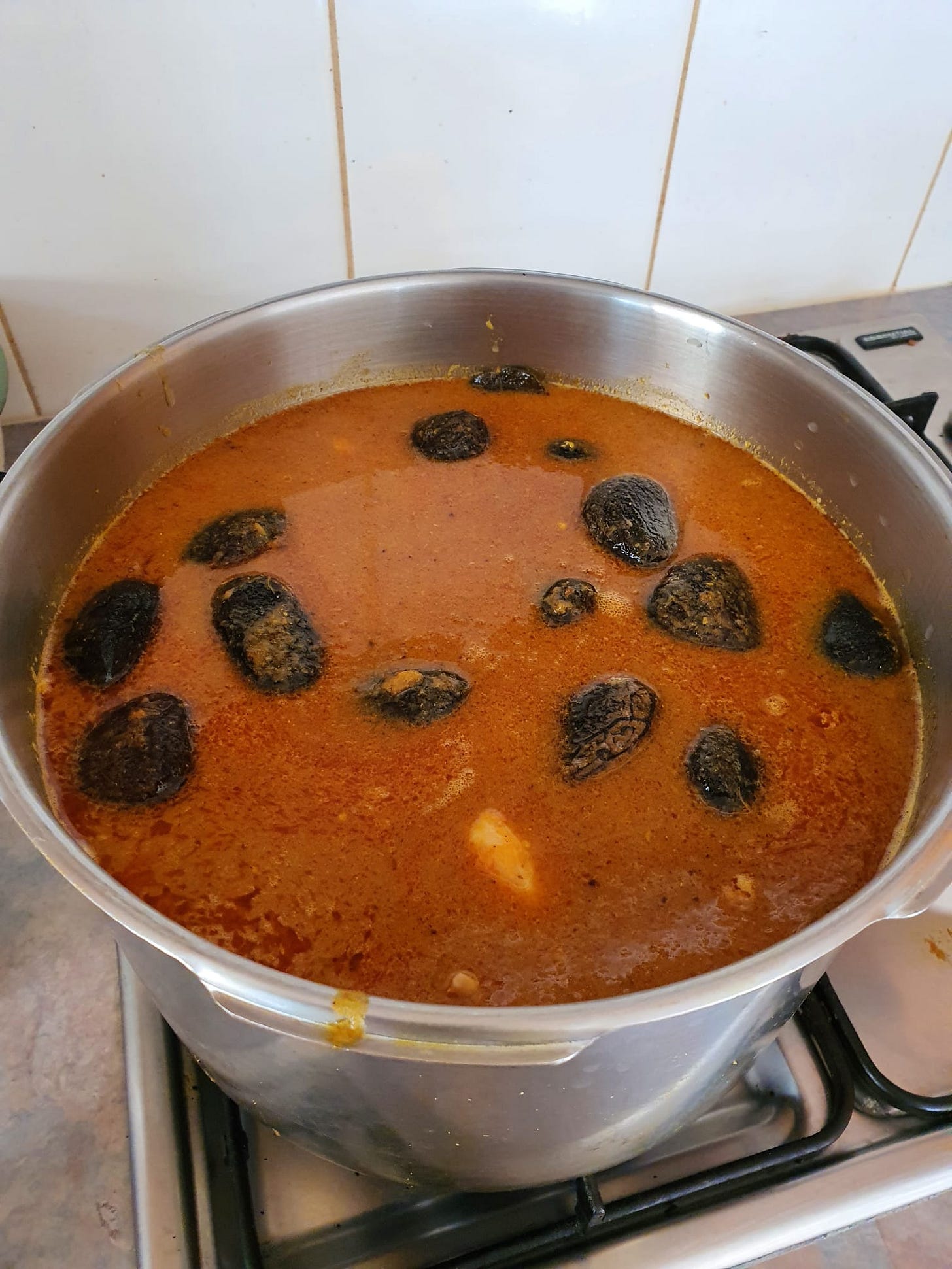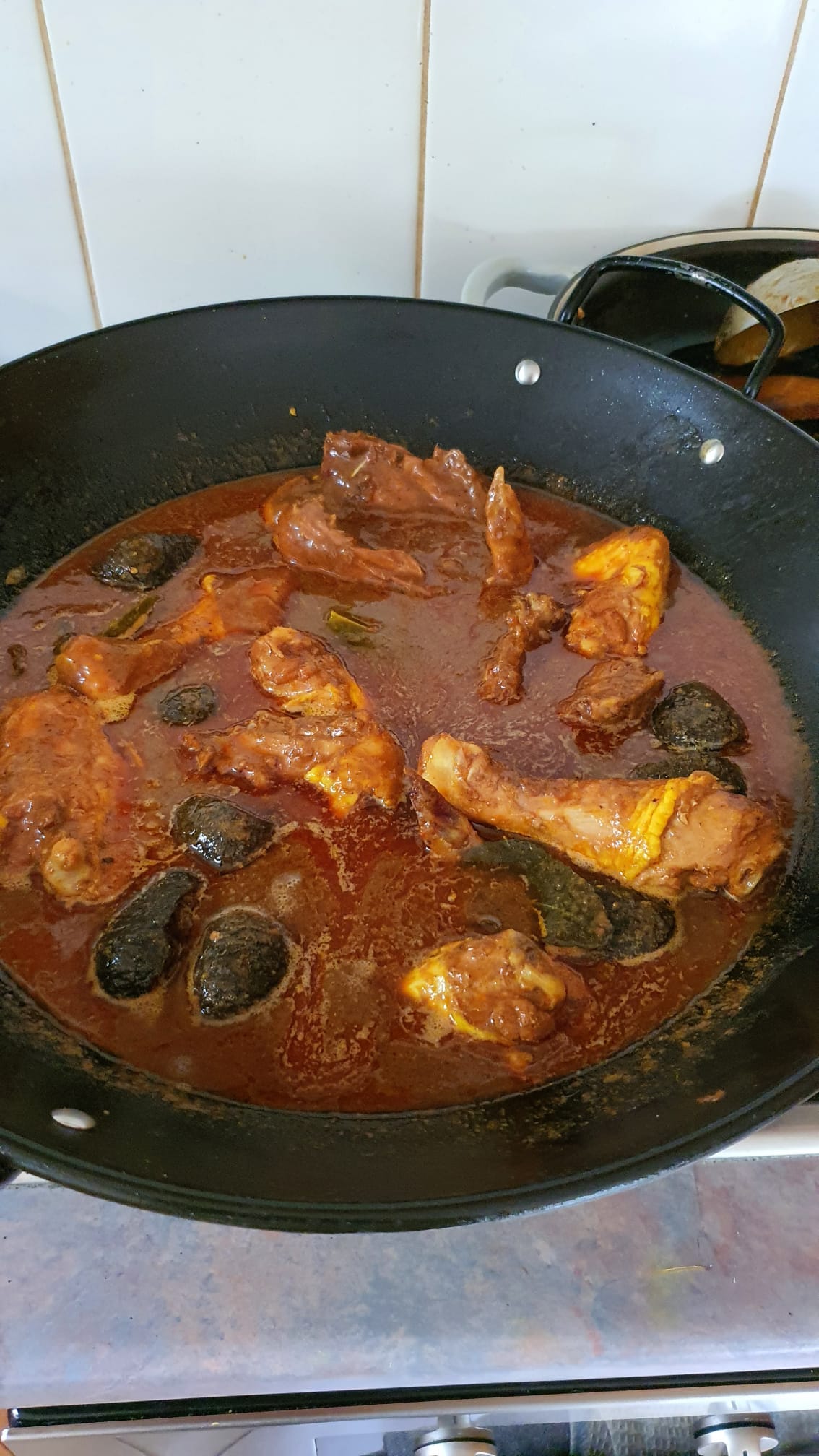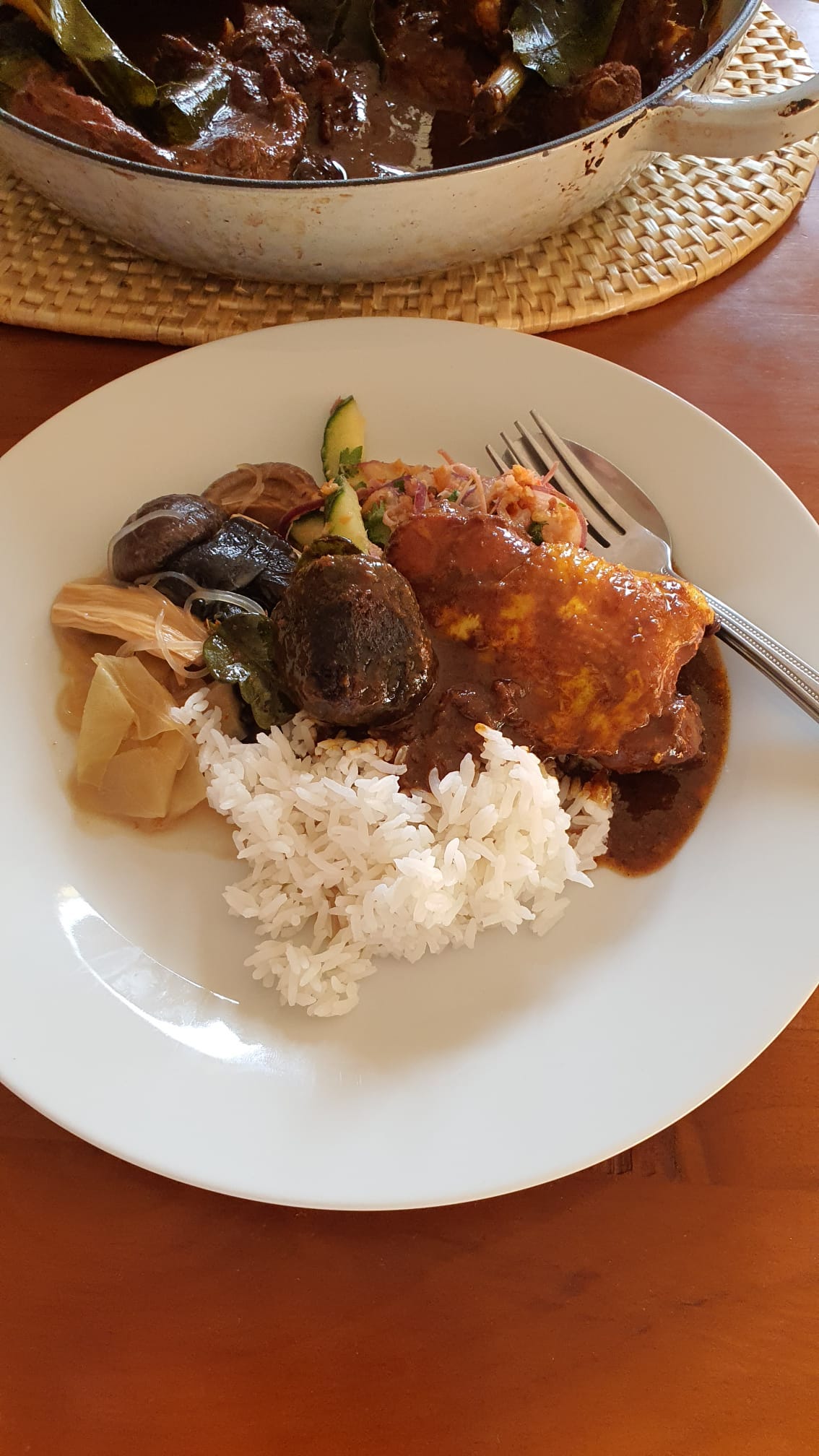This newsletter is a continuation of my previous one, which was all about buah keluak, a nut that is very much beloved in Singapore, and how to prepare it for cooking. If you’ve not read it yet, you can do so here.
Ayam buah keluak is the one dish that is quintessentially Peranakan. Evolved from Indonesian rawon, it is a must-have dish in every Peranakan household during Lunar New Year, and at long table banquets (tok panjang) during celebrations in the past. The interesting thing is that ayam buah keluak is technically not a curry dish. Rather, just like assam fish (assam pedas), a basic rempah is fried, then cooked with tamarind water. What transforms the dish into a unique one, appearance- and taste-wise, is the incorporation of the buah keluak pulp into the gravy.
I know how close to people’s hearts ayam buah keluak can be, and, after all that hard work of preparing the nut, the last thing I wanted to do was to do a botched job cooking it. Luckily for me, I had been speaking with a number of very passionate Peranakans (Matt @perotrumah, Christopher @delicacies070, Berwyn @chiu.guan, and Gab @gabdominic_kuehstry) who were more than willing to share some of their tips with me. It is a surprisingly technical dish to prepare, so I’m including all the tips and pointers that I’ve learnt below.
The rempah
The ingredients that make up the spice paste for ayam buah keluak are, for the most part, pretty standard. Nuts to act as a thickener for the gravy. Shallots. Chillies. Belacan. Galangal. Turmeric root. Lemongrass. But here’s where it gets interesting.
Garlic: While there are ayam buah keluak recipes include garlic, some Peranakan cooks regard this as non-traditional. Gab explains, “Garlic is one of the aromatics that are not very common with Peranakan cooking, unless the dish has stronger Chinese influence such as pongteh or chap chye. I don’t think there’s much of it too in those dishes, but then again, it is up to each person’s own family recipes.” I chose to use garlic because I’ve made ayam buah keluak with it and I like the way that it tastes. I’m also not Peranakan and not bound by cultural norms. You do you!
Chillies: In the chilli department, Christopher and Gab use only dried chillies, while Matt and Berwyn like both. (Berwyn even recommends a combination of two-thirds fresh and one-thirds dried!) About his decision to use both, Matt says that fresh chillies provide heat, while dried chillies lend the braise a beautiful colour. Berwyn adds that dried chillies lend ‘smokiness’ to the dish. I used both.
Other additions: Christopher admits to adding some bunga kantan (torch ginger flower) and a bit of toasted ground coriander to his rempah sometimes. He says that some families also grind lime leaves with their spice paste. “Go to 10 families and you’ll get 10 versions, but the essence is the same. The expressions and the tones are different.”
Belacan: Berwyn and Matt both toast their belacan first before grinding it with the rempah as toasting transforms the flavour profile of the belacan. On the other hand, Gab and Christopher grind the belacan into the rempah raw, their reasoning being that the rempah would be later fried anyway. I chose to toast the belacan before grinding and it was so fragrant!
Grinding the rempah
Because this dish belongs to the category of assam pedas dishes and is not really a curry, Berwyn says that the dish is not meant to have a completely smooth gravy. “For the right mouthfeel, it should be semi-coarse, but not too fibrous.”
Christopher shares his technique: “Ideally, I’ll grind the shallots separately. I pulse it just a bit so it is coarse then hand pound for just a bit.” I took Christopher’s advice and ground all the ingredients apart from the shallots in my blender until completely smooth. Then, I ground the shallots coarsely separately and mixed it all together. Here’s how it looked like:
Frying
When I was working at Candlenut, I was surprised at the amount of oil used to fry rempah. It was almost a one to one ratio!! But Christopher says that this is necessary, “Don’t be stingy, otherwise natural sugars will not be able to caramelise.”
After the rempah is fried, I tossed my chicken pieces in it. I was cooking a mega batch of 50 buah keluak and 3kg of chicken, enough to feed a whole kampong!
Tamarind water
I usually use seedless tamarind pulp from a jar, but since I had gone to so much effort prepping the nuts, I decided to go all the way and splurge on the good stuff - soft bricks of tamarind seeds that you have to knead in water to extract its goodness. Matt emphasised that I HAD to have enough tamarind because ayam buah keluak sold in restaurants often don’t taste of assam. Christopher says to make it a little extra sour because the tartness disappears a little after a night’s rest.
Buah keluak
Next comes the prepared buah keluak nuts, stuffed to the brim with utterly smooth and oily pulp. I wanted to have a dark red gravy, rather than a completely black one, so I decided to stuff all the buah keluak flesh into the nuts to be safe. Christopher and Matt both do the same because the buah keluak pulp does leach into the gravy as it cooks. Berwyn’s family sets a little extra pulp aside to add directly to the gravy, but Berwyn says that the end product is still not too dark - “more like a very deep maroon”.
As for Gab, he says that his own practice depends on his mood, and sometimes he even ditches the buah keluak shells altogether! He tells me that he gets ready-shelled buah keluak pulp from his market when he does not have time to prep the nuts, and mixes it with meat. The little meatballs are then allowed to poach in the gravy. Look how adorable:
A further tip from Berwyn at this point: “Don’t overseason with salt and sugar until the end because the flavour profile changes a bit once the buah keluak integrates with the gravy”.
Here’s how my ayam buah keluak looked with all the ingredients added to it:
Cooking & ageing
All four cooks agreed that ayam buah keluak tastes the best when it’s been aged. Christopher even goes so far as to say that serving it on the third day is ideal.
It is important to keep ageing in mind when you are cooking ayam buah keluak, because, unlike pork or beef, cut-up chicken pieces cook rapidly. If you overcook chicken during the braising process or when reheating it, the meat will disintegrate and you can end up with shredded chicken.
This is especially important to bear in mind if you, like me, are preparing a huge batch. I’ve tried cooking a big batch of chicken curry in the past (7kg of chicken I believe), and the chicken was already completely cooked through even before the entire pot came to a boil. When reheated the next day, it literally fell off the bone - not a good look! After that experience, I’ve been very careful. Christopher concurs, “Unfortunately, chicken doesn’t allow one to simmer and stew and one cannot reheat multiple times.”
This time round, I cooked my ayam buah keluak to the point where the chicken was barely cooked (it only took 10 to 15 minutes), then turned off the heat. (It will still continue to cook in the residual heat of the pot as it cools!) I was mesmerised by the beautiful layer of red oil that had formed at this point:
Serving
The next day (the eve of lunar new year), I took out only what I was going to serve and simmered it until it was tender to my liking. The colour had deepened and the flavours had more fully melded together.
For sides, I went with a simpler version of my reliable chap chye recipe, preparing it with white fermented tofu instead of the usual red. Christopher approves, saying that the vegetarian chap chye is a better accompaniment that the pork-based chap chye, otherwise it is all too rich. “We like something plain to go with BK.”
Berwyn gave me a few other suggestions: a simple stir-fry of hairy melon (or any kind of gourd) with eggs, buangkuang char (fried jicama) with a side of lettuce and sambal belacan, or a kerabu like sambal timun. I went with sambal timun as my other side dish, because it is dead easy once you have sambal belacan on hand.
Here’s how our reunion dinner looked like:
It was so delicious and I am so glad I made a huge batch because I have a whole tub of ayam buah keluak waiting for me in the freezer now anytime the mood strikes!! It was also wonderful to be eating something different from our usual Chinese new year dishes. Wishing you a very happy year of the rabbit! 🍊🍊🐇
Ayam buah keluak
Feeds 8 to 10

